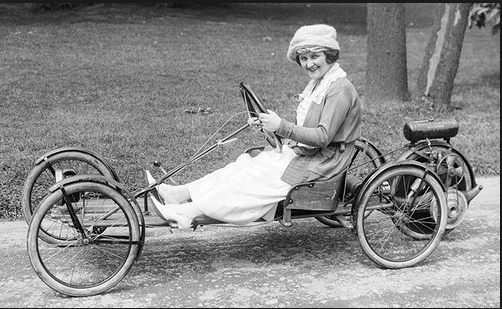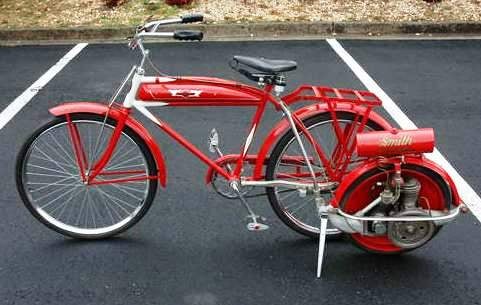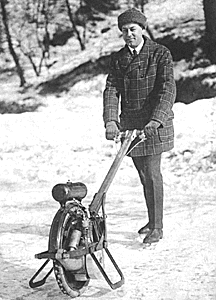 "pip bip - choose Corrour" (hhgttg69)
"pip bip - choose Corrour" (hhgttg69)
01/08/2019 at 01:51 • Filed to: hour rule, Briggs & Stratton
 0
0
 5
5
 "pip bip - choose Corrour" (hhgttg69)
"pip bip - choose Corrour" (hhgttg69)
01/08/2019 at 01:51 • Filed to: hour rule, Briggs & Stratton |  0 0
|  5 5 |

1919 Briggs & Stratton cyclecar
5 wheels too?
bizarre!
 facw
> pip bip - choose Corrour
facw
> pip bip - choose Corrour
01/08/2019 at 02:46 |
|
That seems like too many wheels. Honestly, I bet they could remove that middle axle and have it work with 3.
 Svend
> pip bip - choose Corrour
Svend
> pip bip - choose Corrour
01/08/2019 at 03:19 |
|
You can see where they were going with it, but for us looking back, we’re shouting, ‘Oh come on, you were so close, so close, if you’d just propel the rear wheels rather than had an extra wheel further to the rear to propel it, you’d be there’.
Hindsight is a marvelous thing.
 Cé hé sin
> Svend
Cé hé sin
> Svend
01/08/2019 at 08:03 |
|
But then they’d have had to pay for a differential. Expensive things, gears.
 CobraJoe
> Svend
CobraJoe
> Svend
01/08/2019 at 09:34 |
|
That cycle car was just another application for the Briggs and Stratton motor wheel. It was an early solution for adding internal combustion power to wherever you wanted it.
I’ve even seen some suggestions to mount it to the ceiling in a shop to power wood working tools via belt drives
.


 CobraJoe
> facw
CobraJoe
> facw
01/08/2019 at 09:36 |
|
That motor wheel at the back was a pretty simple unit. The “clutch” was lifting the wheel off of the ground.